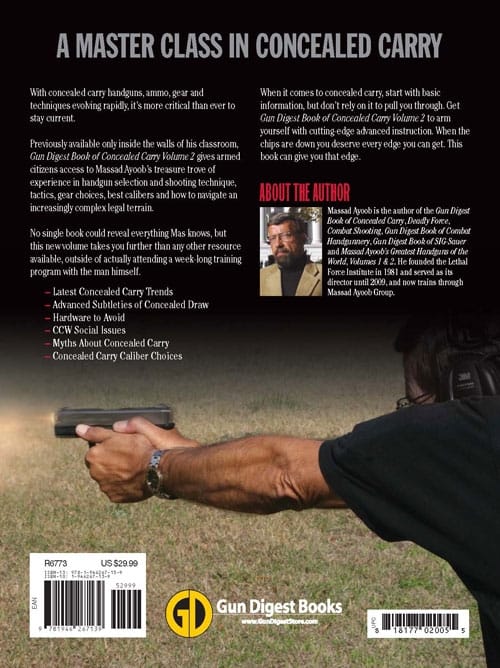Revolvers are generally considered safe to carry if handled responsibly and with proper training. They have inherent safety features that appeal to many gun owners.
Revolvers, revered for their reliability and simplicity, have been a trusted sidearm of choice for personal defense for generations. Their mechanism is straightforward: a rotating cylinder aligns a cartridge with the barrel and firing pin, readying it for discharge. Since there’s no removable magazine or complex feeding system, the chances of a malfunction are notably low.
This design simplicity also translates into ease of use, making revolvers an accessible firearm for beginners and experts alike. Their built-in safety traits, like heavy trigger pulls and the absence of external safety switches, contribute to their safe carry reputation. Knowing the state of your firearm at all times, practicing regular maintenance, and adhering to gun safety principles are essential practices for securely carrying a revolver. Whether for concealed carry, home defense, or recreational shooting, a well-maintained revolver can be a reliable and safe firearm choice.
Revolvers In Modern Self-defense
Today’s self-defense landscape often debates the effectiveness of various firearms. Revolvers, while considered traditional, still maintain a presence as a reliable choice for personal protection. Understanding their role brings clarity to modern self-defense strategies.
Popularity And Perceptions
Revolvers paved the way for personal security in their early days. With iconic status in historical tales, they symbolize a blend of simplicity and reliability. Their current standing in self-defense circles—is a topic of interest and analysis. Individuals treasure revolvers for their ease of use and minimal maintenance. Let’s peek into why revolvers still hold favor among enthusiasts:
- Consistent performance even after years of minimal use
- No magazines means fewer parts to manage
- User-friendly mechanism suits those new to firearms
- Revolvers offer a visibly clear chamber, increasing safety
Beyond these qualities, perceptions persist that revolvers are outdated. Yet, many choose them for their straightforward operation and trustworthy mechanics.
Comparison With Semi-automatic Pistols
Semi-automatic pistols are seen as modern firearm champions in self-defense. They trump revolvers in ammunition capacity and reloading speed. The table below illustrates key comparisons.
| Feature | Revolvers | Semi-Automatic Pistols |
|---|---|---|
| Ammunition Capacity | Typically 5-6 rounds | More than revolvers, varies |
| Reloading Speed | Slower, manual reload | Quicker with magazines |
| Complexity | Simpler, fewer parts | Complex, more components |
| Size & Weight | Compact, easier to carry | Varies, often larger |
The decision between a revolver and a semi-automatic pistol for self-defense relies on personal preference. Weighing simplicity against capacity and speed is crucial.
Revolvers offer an intuitive option with fewer malfunctions for everyday carry. Their resilience and straightforwardness continue to define their niche in modern self-defense scenarios.
Safety Mechanisms Of Revolvers
Many people wonder about the safety of carrying revolvers. Revolvers are popular for their reliability and simplicity. Yet, safety always comes first. Let’s dive into the unique safety features that revolvers boast. These features help prevent accidental discharges and ensure safer handling.
Understanding The Built-in Safety Features
Revolvers come with several built-in safety measures. Transfer bar mechanisms and hammer blocks are common. They prevent the hammer from striking the firing pin unless the trigger is fully engaged. Unlike some semi-automatic pistols, revolvers lack external safety switches. This design means fewer steps before firing, which can be vital in a self-defense situation.
- Transfer Bars: A transfer bar only allows a hammer strike when the trigger is pulled.
- Hammer Blocks: A block between the hammer and firing pin prevents accidental discharge from drops.
- Recessed Chambers: Some revolvers have chambers that sit flush with the back of the cylinder, adding another layer of safety.
The Role Of User Practice And Training
Good habits are crucial for safety with revolvers. Regular training ensures familiarity with the revolver’s operation. This familiarity helps prevent accidents. Responsible revolver carriers always practice safe weapon handling.
- Always treat the revolver as if it’s loaded.
- Keep your finger off the trigger until ready to shoot.
- Never point the revolver at anything you don’t intend to shoot.
- Regularly practice to build muscle memory and confidence.
Through consistent practice, revolver carriers develop respect for their firearm. They learn the importance of safety features. Skill increases with time, reducing the risk of mishandling.
Remember: Safe handling is a shared aspect of all firearms, but revolvers have protections specific to their design. Knowledge and routine training with these mechanisms are vital. They assure a safe experience for revolver carriers.
Common Myths About Revolver Safety
When it comes to carrying firearms for self-defense, revolvers often stir up lively debates. Myths about their safety abound, creating confusion. Today, let’s debunk some of these myths and set the record straight on revolver safety.
Myth: Revolvers Are Outdated
Believing that revolvers are relics of the past is a common misconception. Modern manufacturing has kept revolvers current and reliable. While they may not boast the high capacity of some semi-automatic pistols, their simplicity and ease of use remain unparalleled. They lack many moving parts, reducing the potential for mechanical failures. Hence, revolvers maintain a strong presence among firearm enthusiasts and for self-defense carry.
Myth: Revolvers Are More Prone To Accidental Discharge
The myth of frequent accidental discharge from revolvers lacks evidence. The simple design means there are fewer components to malfunction, inherently decreasing the risk. Revolvers usually require a deliberate trigger pull to fire, making unintended discharges less likely compared to some other firearm types. Consistent and responsible handling further diminishes any accidental discharge risks.
Pros And Cons Of Carrying A Revolver
Carrying a revolver is a choice many make for self-defense. Like any choice, it comes with its own set of benefits and drawbacks. Below we dive into the key advantages and limitations of carrying a revolver.
Reliability And Ease Of Use
Revolvers stand out for their reliability. With fewer moving parts than semi-automatic pistols, they have a lower chance of jamming. Even new shooters find revolvers straightforward to operate. The learning curve is minimal, making them a solid choice for defensive situations where stress is high and simplicity is crucial.
- Simple mechanics reduce the chance of failure
- Fewer jams and malfunctions under various conditions
- Easy to understand and use, even for beginners
Limitations In Capacity And Reload Time
Revolvers do have their downsides. One major concern is their limited capacity. Most revolvers hold between five and six rounds. In contrast, semi-automatic pistols may carry much more. This requires revolver carriers to be more precise and deliberate with their shots. Furthermore, reloading a revolver takes more time than a semi-automatic pistol, which could be crucial in a defensive scenario.
| Revolvers | Semi-Autos |
|---|---|
| 5-6 rounds | Higher capacity |
| Slower to reload | Faster reloads |
Case Studies And Real-world Incidents
Exploring real case studies provides valuable insights into revolver safety during everyday carry. By examining defensive encounters and learning from law enforcement experiences, individuals can make informed decisions about carrying revolvers. This section delves into various incidents, dissecting the roles revolvers played in personal defense and law enforcement situations.
Analysis Of Defensive Encounters
An in-depth look at defensive uses of revolvers uncovers their practicality in real-world scenarios. Here, we break down several case studies:
- Home invasion response: In multiple instances, revolvers have proven to be reliable for home defense due to their simplicity and ease of use.
- Street robbery incidents: Cold statistics show that the swift draw of a revolver has deterred threats, securing civilians’ safety.
- Wildlife encounters: Outdoors, revolvers have effectively neutralized animal attacks, showcasing their utility in varied environments.
These examples demonstrate revolvers performing efficiently when immediate response is critical.
Lessons Learned From Law Enforcement
Law enforcement professionals have years of experience with revolvers. Key takeaways include:
- Mechanical Reliability: Officers often cite the minimal failure rate of revolvers in the field.
- Training Emphasis: Proper training on handling and retention can mitigate risks associated with revolver carry.
- Recorded incidents: Analysis of police reports has clarified the strengths and challenges faced when carrying a revolver.
These lessons guide civilians in proper revolver handling and reinforce the importance of consistent training.
| Aspect | Insight |
|---|---|
| Reliability | High, with few mechanical failures |
| Concealability | Good for discreet carry |
| Training | Critical for effective use |

Credit: www.gundigeststore.com
Choosing The Right Firearm For Personal Safety
Selecting a firearm for personal protection is a crucial decision. Many opt for revolvers because of their simplicity and reliability. Understanding the balance between safety features and personal comfort is key. The right firearm should instill confidence, not concern.
Evaluating Personal Needs And Comfort
The first step in choosing a defensive weapon is assessing individual needs. Key factors include the purpose of carrying, physical constraints, and personal preference. A revolver offers ease of use with fewer moving parts to manage.
User comfort with the firearm type ensures more effective use when needed. Here are aspects to consider:
- Size and weight fit for daily carry
- Caliber strength manageable by the user
- Recoil sensitivity and hand strength
- Capacity needs aligned with user’s security concerns
Training And Ongoing Education For Safe Carrying
Selecting a revolver is just the beginning. Proficiency through regular training is essential. This includes understanding the weapon’s operation and maintenance.
Ongoing education is crucial for responsible carrying. Elements of training should cover:
- Safe handling and storage practices
- Shooting accuracy and control
- Legal aspects of firearm use
- Scenario-based exercises for self-defense readiness
Courses from certified instructors provide structured learning. They help carriers meet these crucial elements effectively.
FAQ’s
Is It Safe To Carry A Revolver Fully Loaded?
Carrying a fully loaded revolver can be safe with proper training and handling. Always engage the safety mechanisms and use a secure holster. Regularly train on safe firearm practices to ensure responsible carry.
Are Revolvers Safer Than Pistols?
Revolvers tend to be mechanically simpler than pistols, which some argue leads to increased reliability and safety. User proficiency and adherence to gun safety protocols are crucial for safe operation, regardless of the firearm type.
Are Revolvers Safe To Conceal Carry?
Revolvers can be safe for concealed carry if handled properly and with the right safety measures in place. Always ensure secure holsters and practice responsible gun safety.
Is It Practical To Carry A Revolver?
Carrying a revolver can be practical due to its reliability and simple operation. It’s compact, easy to maintain, and quick to deploy for self-defense. Always ensure legal compliance and proper training when carrying any firearm.
Conclusion
Safety with revolvers, as with any firearm, hinges on responsible handling and adherence to proper safety protocols. A properly maintained revolver can be a reliable choice for personal protection. Always prioritize training and legal awareness to ensure a firearm is carried safely and effectively.
Remember, the best safety measure is educated, conscientious use.
Related Post:
Top 8 Best Fireproof Gun Safe For 2025 (Buying Guide)
10 Best Long Gun Safe In 2025 ( Reviews & Buying Guide )
5 Best Multi Handgun Safe of 2025 ( Tested & Approved By Expert )



